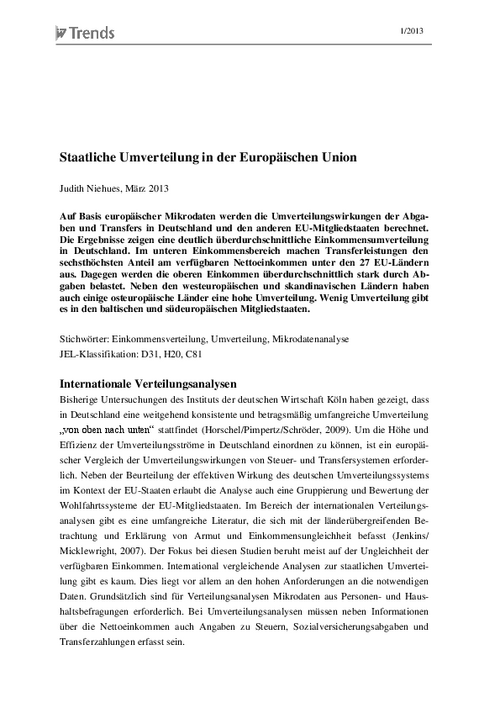Using European microdata, this study shows the redistribution effects of levies and mone-tary social transfers in Germany and the other Member States of the EU. The results indicate that income redistribution in Germany is significantly above average. At lower income levels transfer payments constitute the sixth highest proportion of disposable net income among the 27 EU countries. At the other end of the scale, the burden of levies on upper income levels is above average. Whereas western Europe, Scandinavia and certain eastern European countries have a high degree of redistribution, in the Baltic states and the countries of southern Europe the level is low.
Download | PDF


